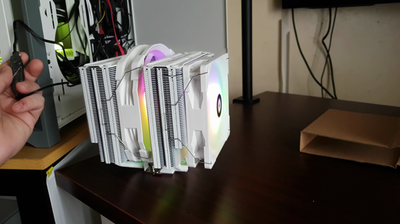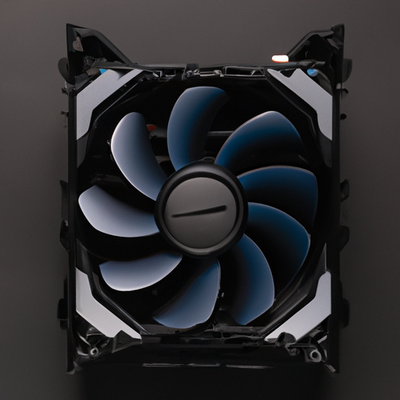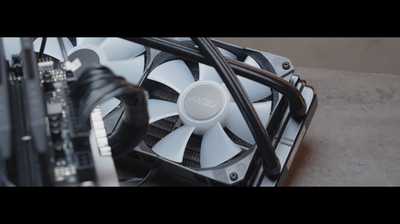Becoming a graphics programmer: my thoughts (2023)
Introduction
Foundations and First Steps in Graphics Programming
Embarking on the journey to become a graphics programmer is filled with choices, and the early decisions you make can heavily impact your learning curve and career trajectory. Let's talk about three foundational elements you should consider:
Understanding Your End Goal: Before diving into the how, focus on the what. What do I want to create? Whether it's building the next big game or revolutionizing medical imaging, this clarity sets the stage for targeted learning.
Learning Fundamentals: It's immensely valuable to grasp basic concepts like vector math, image compositing, and the structure of 3D models. Even if it means initially bypassing the intricacies of cutting-edge tools, this knowledge is portable across technologies and remains relevant despite shifting trends.
Choosing Your First Tools Wisely: While specialized knowledge in a tool like OpenGL has its place, balance your learning with more broadly applicable tools such as Unity or Unreal Engine. This approach enhances marketability and agility in adapting to new tech.
Now, while there's undeniable value in understanding graphics programming from the ground up, it's often not practical or necessary. I mean, knowing how to build a software rasterizer is cool, but will you ever use it in a job? Unlikely. Most of us will be using GPU-accelerated rendering engines. However, having that conceptual knowledge has proven beneficial. It allows you to visualize the underlying operations when debugging or optimizing your programs.
That said, I've seen many graphics job postings that insist on C++ proficiency, making it seem like a non-negotiable skill for a career in the field. But here's the thing: programming languages are tools, and what matters in the long run is your ability to adapt and pick up new skills.
One of my big takeaways? Keep broadening your horizons. The graphics industry values versatility just as much as it does specialization. Peruse sources like learnopengl.com for practical guides, and for those really interested in the software side, take a look at the treasure trove that is the tinyrenderer GitHub repo. But always relate it back to what you want to achieve.
If you're serious about learning graphics programming, you'll have to be both an artist and a scientist — creative and logical. You'll pick up a myriad of technical skills along the way, but the real growth happens when you apply these skills to projects that excite you. It's a timely reminder to myself, too, to focus on the creative potential of graphics programming, not just the technical grind.
Navigating the Sea of Tools and Technologies
When I first considered diving into graphics programming, I realized quickly that it's not just about learning OpenGL or DirectX; it's about understanding what you want to build and why. The sea of tools and technologies available today can be both a blessing and a curse, depending on how you navigate it. Here's my take on how to approach this:
Understand Your Endgame - Before diving into any specific technology, I asked myself, "What do I want to create?" Knowing this helped me filter the tools that would get me there.
Start with High-level Tools - Early on, I chose to learn more abstract tools like Unity and Unreal Engine. They’re extremely powerful and they let you create something visually striking pretty quickly.
Gradually Dig Deeper - As I got more comfortable, I moved towards lower-level APIs like Vulkan and WebGPU to get under the hood, which absolutely enhanced my understanding.
4. Keep Learning Broadly - Even as I deepen my expertise, I stay current on multiple technologies rather than getting pigeonholed into one. This makes me more adaptable and keeps my skills relevant.
Sure, this journey has drawbacks. It takes time and patience to build expertise, and you might feel behind the curve compared to those who delve deep into C++ or GPU details from day one. There’s a real risk of getting overwhelmed by the sheer volume of what you could learn.
But let’s be real, most job postings for graphics roles ask for C++ knowledge, but the catch is, they rarely need you to write a graphics engine from scratch. That's why I think it's crucial not to get stuck in the tutorial hell of low-level coding unless it's going to pay off for what you specifically want to create.
I've found that knowing about shader programming, rendering pipelines, and GPU architecture benefits me greatly. However, the key has always been to not lose sight of the practical applications of these skills.
The idea that "deepest knowledge in the narrowest area" leads to career success is somewhat flawed. Broadly skilled individuals often have a wider range of career opportunities, even if deep specialists might command higher salaries in their niche. It’s a trade-off but consider this: wide-ranging knowledge in various languages and frameworks, combined with the ability to dive deep when necessary, has been the sweet spot in my experience.
Remember, graphics programming is a blend of art and science. Balancing creativity with technical skills is paramount, and the tools you choose are there to serve your vision, not confine it. Working on personal projects and contributing to open-source repos can also be a brilliant way to demonstrate your skills and learn through practical application. Just keep swimming through the tech sea, and you'll refine your course as you go.
Bridging the Gap Between Learning and Industry Application
Bridging the gap between learning graphics programming and applying that knowledge in the industry is no simple feat. Based on my experiences, I've come to realize a few key points that might help navigate this transition:
Practical Experience vs. Theory: While academic knowledge is invaluable, nothing beats getting your hands dirty with real-world projects. Theories and algorithms make more sense when you see them in action.
Networking and Community: Engaging with the graphics programming community can open doors to new opportunities and insights. You want to be where the action is—GitHub repos, Stack Overflow, or forums like the Graphics Programming channel on Discord.
Portfolio Development: Building a portfolio with diverse projects not only sharpens your skills but also showcases your capability to potential employers. Take advantage of platforms like GitHub to document and share your work.
One challenge is that industry tools and practices can change at a breakneck pace. What's hot today might be obsolete tomorrow. However, focusing on core concepts—like rendering algorithms, optimization techniques, and shader programming—can provide a stable foundation that withstands the test of time. It’s not just about learning a specific API or tool, but understanding the principles that drive them.
I've also come to appreciate that while specialization can be lucrative, maintaining a broad skill set can offer greater job security in the long run. In fact, learning about different technologies, such as how to build your own deep learning machine, can be incredibly valuable. Indeed, if I had focused solely on becoming an OpenGL guru, I might have found myself out of touch with the industry's pivot to platforms like Unity and Unreal Engine.
From my point of view, one of the most positive aspects of becoming a graphics programmer is that the skills are transferable across a range of industries—from game development to virtual reality and even visual effects for film. The challenge, though, is ensuring you stay abreast of industry standards and practices, which can mean continuous learning and adaptability.
When I first started out, I was eager to code everything from scratch, but I quickly learned the benefits of leveraging high-level engines and tools that handle a lot of the heavy lifting. This approach not only accelerated project completion timelines but also expanded my understanding of how complex systems are structured and optimized.
While some may argue that this might limit one’s understanding of the "nuts and bolts" of graphics programming, I've found the opposite to be true. By seeing how mature engines solve common problems, I’ve been able to apply similar strategies in my own lower-level work when needed.
Ultimately, breaking into graphics programming and staying relevant requires a balance between theory and practice, networking and independent learning, and versatility and depth of knowledge. As new technologies emerge, I remain committed to adapting and evolving—not just as a programmer, but as a creative problem solver in the digital realm.
The Evolution of the Graphics Programmer Role
As a graphics programmer, I've ridden the wave of this ever-evolving field, and I've realized it's much like building your own deck in a strategic card game. You start by knowing your basics - the hearts and diamonds of graphics, the mathematical foundations and principles that will steer everything else you do. Sure, you'll pick up the spades of API knowledge along the way, and definitely the clubs of software tools, but it's the underlying principles that consistently carry you through each version upgrade and technology shift.
Here's a quick list that I believe captures the essence of the role's evolution:
Adapting to Changes: Back in the '90s, the focus was on CPU-intense software rendering. When hardware acceleration became a thing, we had to pivot.
Learning New APIs: OpenGL's prominence made way for DirectX, and now Vulkan and WebGPU. Staying adaptable is key.
Understanding the Hardware: Knowing your GPU inside and out has become crucial, especially with less abstraction in newer APIs like Vulkan.
Specializing: Early careers might start more general, but as you find your niche, specializing in areas like shader programming or performance optimization can become important.
Expanding Beyond Games: Graphics programming is no longer just about games - now we touch everything from VR to scientific visualization.
Sure, there are drawbacks. The niche nature of low-level graphics can feel limiting. Not everyone values the intimate knowledge of rendering pipelines or shader nuances. Plus, the pace at which technology moves can be dizzying – what you learn today might not be as relevant tomorrow, and keeping up can sometimes feel like more work than the actual work.
But the positives? They're huge. We're the wizards behind the curtain, conjuring up digital worlds from mere lines of code. The transition from raw OpenGL to feature-rich engines like Unity has also made the role more accessible, allowing for a greater focus on creativity and innovation rather than just the grind of optimization. Moreover, the expanding universe of applications beyond gaming into fields like AI and simulation has made our skillsets more transferable and valuable.
In my journey, although I've reminisced about the days of wrestling directly with the nuts and bolts of graphics rendering, there's a certain thrill in harnessing the power of high-level game engines and contributing to the expansive world of real-time rendering. Whether it was working through the math of a Blinn-Phong shading model or tinkering with Unity's latest material rendering features, every step has been about blending creativity with technical acumen.
So, while the role of a graphics programmer has certainly had its peaks and troughs over the years, I see it as a canvas that's continually expanding - offering a spectrum of opportunity for those willing to learn and adapt. And the truth is, there's still a bit of that '90s software renderer in all of us, bridging the gap between pixels and possibilities.
Planning a Sustainable and Evolving Career Path
In planning my career as a graphics programmer, I've found it vital to consider both the short-term projects and long-term aspirations. Here's my two cents on striking a balance for a career that's enriching yet sustainable:
Diversify Your Skills - Don't put all your eggs in one basket. The market is ever-changing – today's hot tool or language might be tomorrow's news. You need to stay agile. I started with C++ and OpenGL, but I'm now getting my hands dirty with shaders in Unity.
Follow the Industry Trends - Staying updated is key. For instance, real-time rendering and ray tracing are huge right now. By staying in the loop through forums and articles, you can pivot when necessary.
Continuous Learning - There's no end to learning in this field. Whether it's reading SIGGRAPH papers or digesting Git repos like tinyrenderer, the learning curve keeps you on your toes and the brain sharp.
Networking - The graphics programming community is tight-knit but welcoming. Join conversations on platforms like ShaderToy or give talks at Meetups. These connections can be a lifeline for opportunities and advice.
Specialize Strategically - While being a jack-of-all-trades has its merits in adaptability, specialization can catapult you to 'expert' status. But choose wisely and select a niche with stamina.
The pros are there – exciting new tech, constant evolution, and a community of brilliant minds. Yet, these also form the cons. My experience is different; the fast pace isn't for everyone, and there's always the risk of burnout if you're constantly sprinting to keep up with the latest tools or language updates.
Universities and online courses provide a structured path to polish vital skills, whether it's Berkeley's CS184 for those who prefer academic rigor or a practical Udemy course for those who learn by doing. These studies are complemented by repositories like Three.js for web-based 3D graphics or Unity's GPU Gems for in-depth shader knowledge.
Given all these elements, the key takeaway is to build a foundation that is broad enough to adapt to the winds of change. Play the long game – invest time in concepts and principles because they remain constant even when APIs or engines don't. And let's not forget personal wellbeing; take breaks, have a hobby outside screens, and harness the thrill of making magic happen with pixels, without letting the pixels overshadow life's other pixels.
Share


